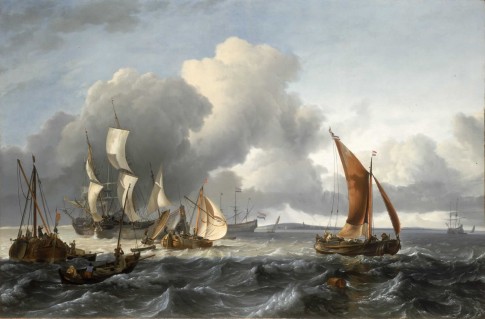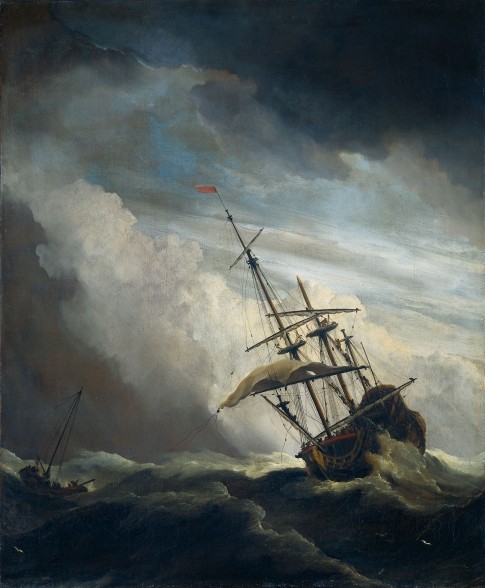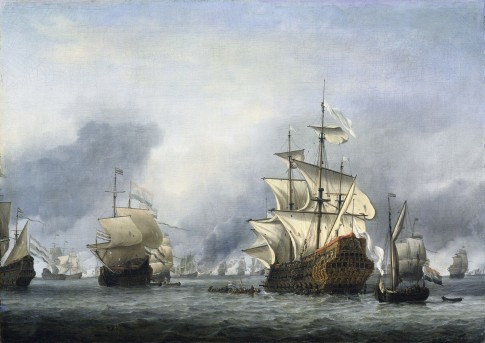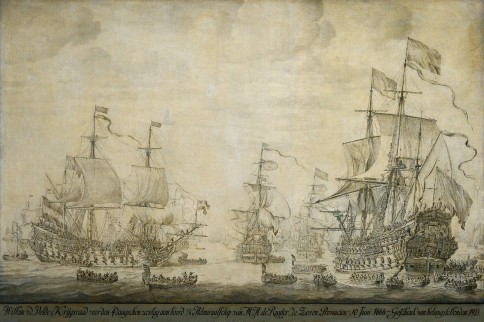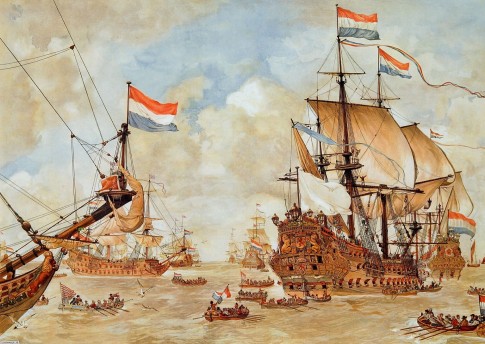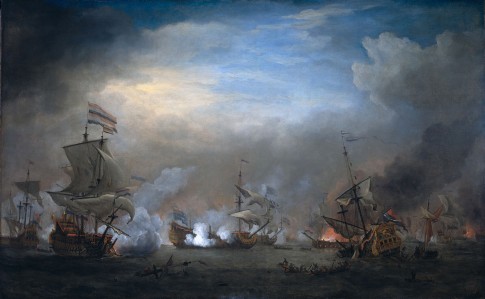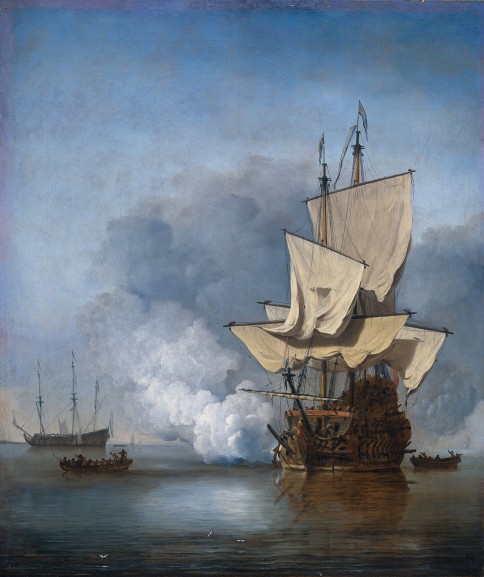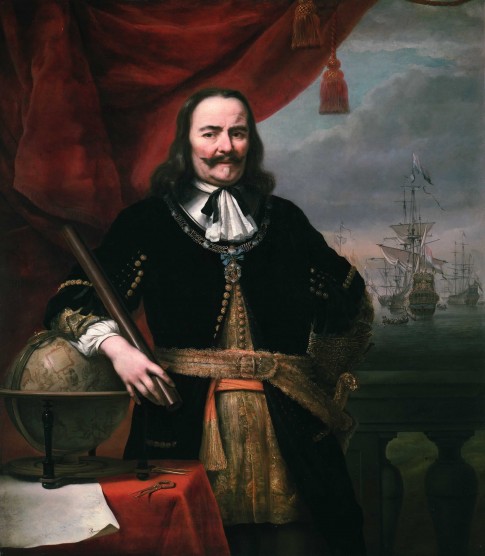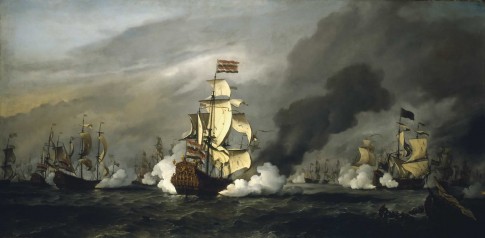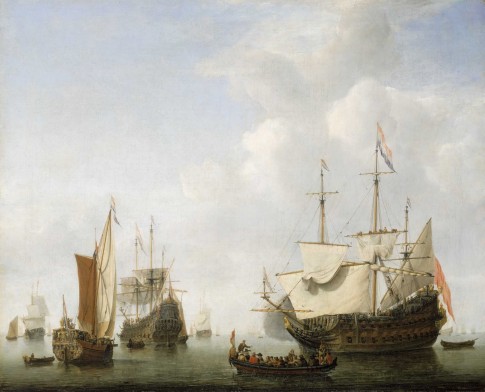
A DUTCH FLAGSHIP COMING TO ANCHOR WITH A STATES YACHT BEFORE A LIGHT AIR
By Willem van de Velde, the Younger, 1658
An early painting by the artist before he had developed his own artistic style of ship portrayal. In the left foreground is a States yacht, in starboard-quarter view, running towards the flagship under a white sprit-sail and a brown square sail boomed out to port. She is thought to be the yacht laid down for Prince Frederik Hendrik but completed after his death in 1647 for Willem II. A date inscribed in the cartouche above the rudderhead is understood to be the date of the picture although only ‘165?’ can now be clearly read. She bears the arms of Orange and lion supporters on the stern, and Dutch colours at the peak, stern and dipped on a staff at the masthead. Two trumpeters positioned in the stern face towards the right as they play their instruments. The yacht is towing a boat with two men in it.
In the left middle distance is a ship at anchor, in port-quarter view, believed from her stern decoration to be the ‘Huis te Zwieten’, built in 1653. She shows the arms of Amsterdam above the rudder as well as crossed anchors to either side of it, signifying the Admiralty, and flies a Dutch flag at the fore and also as an ensign. In the left background are two ships under sail, close-hauled on the starboard tack. Other ships and vessels lie in the distance. To the right a large ship in port-bow view is under way close-hauled on the starboard tack and firing a forward gun to starboard. This is probably the ‘Eendracht’, 76 guns, built in 1653, with a prominent turret on her quarter gallery and lion supporters just visible on the taffrail. This was the flagship of Lieutenant-Admiral J. van Wassenaer who assembled the fleet that was to sail to the Baltic in October 1658. She flies a Dutch flag at the main, a plain red ensign and a striped jack, red white and blue. Men are visible on the main topsail yard preparing to furl the sail.
Pulling to the right in the centre foreground is a ship’s boat with four oars a side, four distinguished people seated aft and a trumpeter standing forward. A figure standing in the stern is gesturing towards the notable men in the boat. Lieutenant-Admiral Michiel de Ruyter, promoted Vice-Admiral of Holland and Westfriesland in November 1653, flew his flag in the ‘Huis te Zwieten’ on convoy duty to the Mediterranean and back in 1654.
On 27 May 1658, at the time Wassenaer was assembling his Baltic squadron in the Texel, he once more sailed in her with a squadron for Portugal, and again in May 1659 when he led reinforcements to Wassenaer in Denmark. Assuming that the flag at the foremast of the ‘Huis te Zwieten’ signifies de Ruyter’s substantive rank of vice-admiral, the conjunction shown in the picture may therefore commemorate the scene in the Texel in the spring of 1658.
The artist was the younger son of Willem van de Velde the Elder. Born in Leiden, he studied under Simon de Vlieger in Weesp and in 1652 moved back to Amsterdam. He worked in his father’s studio and developed the skill of carefully drawing ships in tranquil settings. He changed his subject matter, however, when he came with his father to England in 1672-73, by a greater concentration on royal yachts, men-of-war and storm scenes. From this time painting sea battles for Charles II and his brother (and Lord High Admiral) James, Duke of York, and other patrons, became a priority. Unlike his father’s works, however, they were not usually eyewitness accounts. After his father’s death in 1693 his continuing role as an official marine painter obliged him to be more frequently present at significant maritime events. The painting is signed lower right ‘W.V.Velde’ and is unclearly dated to the 1650s as already noted.
continue reading.....
